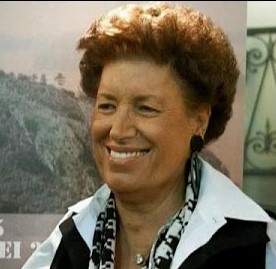The founding of the Carabinieri
Italy’s stylish ‘First Force’
The Carabinieri Corps was created on this day in 1814 in Italy by a resolution passed by Victor Emmanuel I of Savoy. He established an army of mounted and foot soldiers to provide a police force, to be called Royal Carabinieri (Carabinieri Reali). The soldiers were rigorously selected ‘for their distinguished good conduct and judiciousness.’ Their task was defined as ‘to contribute to the necessary happiness of the State, which cannot be separated from protection and defence of all good subjects.’ Their functions were specified in the royal licence issued at the time, which underlined the importance of the personal skills required by the soldiers selected. It also affirmed their dual military and civil roles. The sense of duty and high level of conduct displayed by the Carabinieri went on to win the respect of the Italian people. They were called Carabinieri to avoid any comparisons with the former Napoleonic gendarmerie, and because they were equipped with carbines as weapons. Their dress uniform was designed to reflect the solemn image of the sovereign state, with a two cornered hat, known as the lucerna, and dark blue dress coat. Read more…
_____________________________________________________
Jarno Trulli - racing driver and winemaker
Ex-Formula One star still winning prizes
The racing driver-turned-winemaker Jarno Trulli was born on this day in 1974 in Pescara on the Adriatic coast. Trulli competed in Formula One from 1997 until 2011, competing in more than 250 Grand Prix. He enjoyed his most successful season in 2004, when he represented the Mild Seven Renault team and finished sixth in the drivers’ championship. He retired from racing in 2014-15 to focus on his winemaking business, which he had established while still competing and which now produces more than 1.2 million bottles every year. Trulli’s Podere Castorani vineyard, situated near the village of Alanno, some 35km (22 miles) inland of Pescara, focuses largely on wines made from Abruzzo’s renowned Montepulciano grapes. Although he was familiar with vineyards as a boy - his grandfather was a winemaker - Trulli’s parents were motorsports fans and named him after a Finnish Grand Prix motorcycling champion, Jarno Saarinen, who had been killed at the Monza circuit the year before Trulli was born. Trulli began kart racing at the age of seven and by 17 was Karting World Champion. He made his debut in Formula Three in 1993 and in 1996, driving for the Benetton-sponsored Opel team, won the German F3 Championship. Read more…
______________________________________________________
Giulio d’Este of Ferrara
Plots and prison ruin life of handsome son of Duke
Giulio d’Este, who spent more than half of his life in prison for taking part in a failed conspiracy against his half-brother, the Duke of Ferrara, was born on this day in 1478 in Ferrara. He was the illegitimate son of Ercole I d’Este, an earlier Duke of Ferrara, born as a result of an affair the Duke had with Isabella Arduin, a lady in waiting to his wife. Giulio was often in conflict with his half-brothers, Alfonso and Ippolito, which led to him eventually playing his part in a plot to assassinate them. He had grown up in the court of Ferrara and later lived in a palace on the Via degli Angeli in Ferrara. The first major conflict between Giulio and Ippolito arose over a musician, Don Rainaldo of Sassuolo. Rainaldo was in the service of Giulio, but Ippolito, who had by then become a Cardinal, wanted him for his chapel and so in 1504 he abducted Rainaldo and held him in the Fortress of Gesso. When Giulio discovered where he was being held, he went with a group of armed men and recovered the musician. In a sign of defiance, Giulio replaced him with the warden of the fortress. Ippolito complained about his actions to his brother, Alfonso. Read more…
_______________________________________________________
Tommaso Buscetta - Mafia ‘pentito’
Sicilian gangster’s testimony put hundreds behind bars
The Sicilian mobster Tommaso Buscetta, who was the first major Mafia figure to break the code of omertà and pass details of organised criminal activity to the authorities, was born on this day in 1928 in Palermo. His evidence to the celebrated anti-Mafia judge Giovanni Falcone paved the way for the so-called Maxi Trial, a process lasting six years that led to the conviction and jailing of 350 mafiosi. Buscetta’s testimony in the Pizza Connection Trial in New York State at around the same time in the mid-1980s led to the conviction of several hundred more mobsters both in Italy and the United States, including the powerful Sicilian Mafia boss Gaetano Badalamenti. Arguably the most shocking information he passed on to the authorities concerned Italy’s three-times former prime minister, the late Giulio Andreotti, whose links with the Cosa Nostra he exposed shortly after Falcone was murdered in May 1992, killed by a massive bomb placed under the motorway linking Palermo with the city’s international airport. Andreotti was found guilty of complicity in the Mafia assassination of a journalist and sentenced to 24 years in jail. Read more…
























